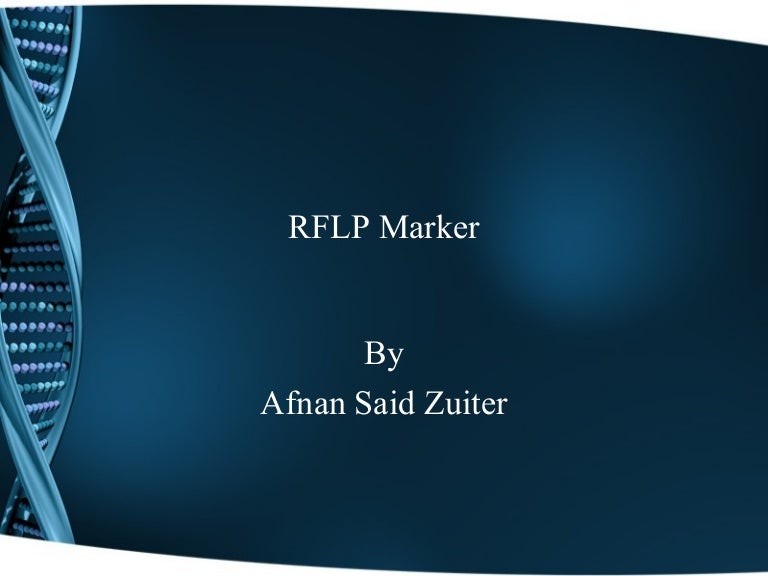Restriction Fragment Length Polymorphism (RFLP), a molecular marker predating the PCR revolution, holds a significant position in the annals of genetics. Understanding why RFLP acts as a codominant marker requires a journey into the intricacies of its underlying mechanism and the information it reveals about an organism’s genotype.
To grasp the codominance of RFLP, envision a cellular library filled with countless volumes (DNA). RFLP acts as a librarian, identifying specific books (genes or DNA sequences) and noting their length. Polymorphisms, in this analogy, are different editions of the same book, each with a slightly altered number of pages. A codominant marker, in this context, is akin to noting the presence of *both* editions if they exist within an individual’s collection. This ability to discern both parental alleles is the crux of RFLP’s codominant nature.
The foundational principle of RFLP lies in the use of restriction enzymes. These enzymes, bacterial in origin, function like molecular scissors, recognizing and cleaving DNA at specific nucleotide sequences known as restriction sites. Variations in these restriction sites, arising from mutations, insertions, or deletions, result in DNA fragments of varying lengths upon enzyme digestion. This length variation is the polymorphism that RFLP exploits.
Consider a specific locus within the genome. An individual may inherit two copies (alleles) of this locus, one from each parent. Now, imagine this locus contains a restriction site. If both parental alleles possess the same restriction site, digestion with the corresponding enzyme will produce a single fragment length. However, if one allele lacks this restriction site (due to a mutation that altered the recognition sequence), digestion will yield a different fragment length. This difference in fragment length is detectable using gel electrophoresis, a technique that separates DNA fragments based on size.
This is where the codominance becomes apparent. In a homozygous individual, where both alleles are identical (either both with the restriction site or both without), a single band will appear on the gel, corresponding to the fragment length associated with that allele. However, in a heterozygous individual, where the two alleles are different (one with and one without the restriction site), *two* bands will appear on the gel. One band represents the fragment length produced by the allele containing the restriction site, and the other represents the fragment length produced by the allele lacking the restriction site. The presence of both bands directly indicates the presence of both alleles, revealing the heterozygous genotype.
Let us use a concrete example. Suppose a particular locus has two alleles, A1 and A2. Allele A1 contains a restriction site for a specific enzyme, while allele A2 lacks it. An individual with the genotype A1A1 will produce only one band on the gel. An individual with the genotype A2A2 will also produce only one band, but at a different position than A1A1. Crucially, an individual with the genotype A1A2 will exhibit *both* bands, one corresponding to the A1 fragment and one corresponding to the A2 fragment. This unambiguous detection of both alleles defines the codominant nature of RFLP.
The ability to directly visualize both alleles distinguishes RFLP from dominant markers. Dominant markers only reveal the presence of one allele, masking the presence of the other in heterozygotes. With RFLP, there is no masking; both alleles contribute to the observed banding pattern. This makes RFLP a powerful tool for accurate genotyping and pedigree analysis.
The appeal of RFLP lies in its reliability and the unambiguous information it provides. The direct visualization of fragment lengths, without relying on indirect inferences, makes it a robust and trustworthy marker system. However, it is important to acknowledge its limitations. RFLP requires relatively large amounts of high-quality DNA, and the procedure itself is labor-intensive and time-consuming. The advent of PCR-based markers, such as microsatellites and SNPs, has largely supplanted RFLP in many applications due to their speed, efficiency, and lower DNA requirements. Nevertheless, RFLP remains a valuable tool in specific contexts, particularly when dealing with organisms for which PCR-based markers are not well-developed or when high accuracy in genotyping is paramount.
Furthermore, RFLP’s codominance makes it particularly useful in areas like forensic science, where definitive genotype identification is critical. The ability to differentiate between homozygous and heterozygous individuals with certainty provides a level of precision that is often unattainable with dominant markers. In population genetics, RFLP allows for the accurate assessment of allele frequencies and genetic diversity, providing insights into the evolutionary history and relationships of different populations. This depth of information contributes significantly to understanding evolutionary processes.
In summary, RFLP’s codominance stems from its mechanism of action: the direct visualization of different DNA fragment lengths resulting from variations in restriction sites. This allows for the unambiguous identification of both alleles in a heterozygous individual, making it a powerful and reliable marker for genetic analysis. While newer technologies have emerged, the principles underlying RFLP’s codominance remain fundamental to understanding the behavior of other molecular markers and their applications in diverse fields of biology.










Leave a Comment